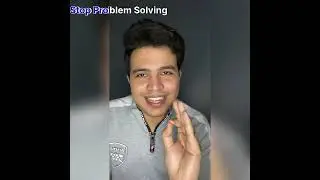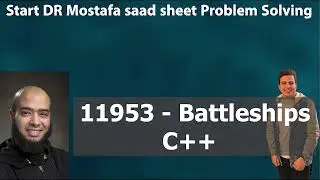A. Pangram (c++)
للاستفسار :
فيس بوك : / eslam.khder.98
لينكد ان : https://www.linkedin.cn/in/eslam-khde...
رابط قناه التلجرام :
https://t.me/eslamkhder11
---------------------------------------------------------------------------------------------------
رابط المساله :
https://codeforces.com/contest/520/pr...
-----------------------------------------------------------------------------------------------------------------
رابط ال GITHUB :
https://github.com/EslamKhder/Start-D...
----------------------------------------------------------------------------------------------------------
لينك الشيتات :
https://docs.google.com/spreadsheets/...
---------------------------------------------------------------------
THE PROBLEM-SOLVING PROCESS
In order to effectively manage and run a successful organization, leadership must guide their employees and develop problem-solving techniques. Finding a suitable solution for issues can be accomplished by following the basic four-step problem-solving process and methodology outlined below.
Step Characteristics
1. Define the problem
Differentiate fact from opinion
Specify underlying causes
Consult each faction involved for information
State the problem specifically
Identify what standard or expectation is violated
Determine in which process the problem lies
Avoid trying to solve the problem without data
2. Generate alternative solutions
Postpone evaluating alternatives initially
Include all involved individuals in the generating of alternatives
Specify alternatives consistent with organizational goals
Specify short- and long-term alternatives
Brainstorm on others' ideas
Seek alternatives that may solve the problem
3. Evaluate and select an alternative
Evaluate alternatives relative to a target standard
Evaluate all alternatives without bias
Evaluate alternatives relative to established goals
Evaluate both proven and possible outcomes
State the selected alternative explicitly
4. Implement and follow up on the solution
Plan and implement a pilot test of the chosen alternative
Gather feedback from all affected parties
Seek acceptance or consensus by all those affected
Establish ongoing measures and monitoring
Evaluate long-term results based on final solution
1. Define the problem
Diagnose the situation so that your focus is on the problem, not just its symptoms. Helpful problem-solving techniques include using flowcharts to identify the expected steps of a process and cause-and-effect diagrams to define and analyze root causes.
The sections below help explain key problem-solving steps. These steps support the involvement of interested parties, the use of factual information, comparison of expectations to reality, and a focus on root causes of a problem. You should begin by:
Reviewing and documenting how processes currently work (i.e., who does what, with what information, using what tools, communicating with what organizations and individuals, in what time frame, using what format).
Evaluating the possible impact of new tools and revised policies in the development of your "what should be" model.
2. Generate alternative solutions
Postpone the selection of one solution until several problem-solving alternatives have been proposed. Considering multiple alternatives can significantly enhance the value of your ideal solution. Once you have decided on the "what should be" model, this target standard becomes the basis for developing a road map for investigating alternatives. Brainstorming and team problem-solving techniques are both useful tools in this stage of problem solving.
Many alternative solutions to the problem should be generated before final evaluation. A common mistake in problem solving is that alternatives are evaluated as they are proposed, so the first acceptable solution is chosen, even if it’s not the best fit. If we focus on trying to get the results we want, we miss the potential for learning something new that will allow for real improvement in the problem-solving process.
3. Evaluate and select an alternative
Skilled problem solvers use a series of considerations when selecting the best alternative. They consider the extent to which:
A particular alternative will solve the problem without causing other unanticipated problems.
All the individuals involved will accept the alternative.
Implementation of the alternative is likely.
The alternative fits within the organizational constraints.
4. Implement and follow up on the solution
Leaders may be called upon to direct others to implement the solution, "sell" the solution, or facilitate the implementation with the help of others. Involving others in the implementation is an effective way to gain buy-in and support and minimize resistance to subsequent changes.































